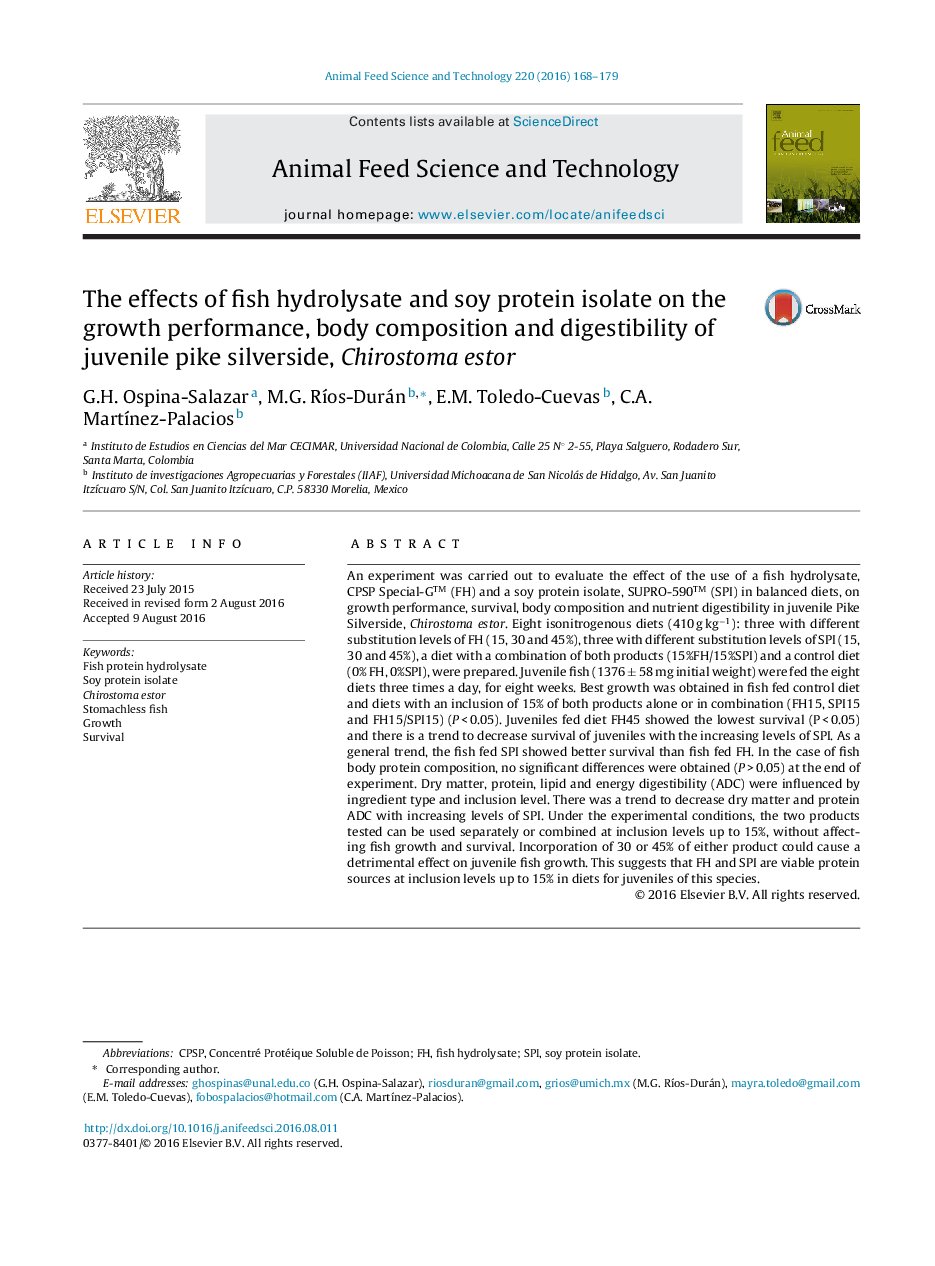| Article ID | Journal | Published Year | Pages | File Type |
|---|---|---|---|---|
| 2419250 | Animal Feed Science and Technology | 2016 | 12 Pages |
•We assessed the effect of two commercial products in diets for pike silverside.•Inclusion levels up to 15% of both products did not affect fish growth and survival.•Incorporation of 30 or 45% of both causes a negative effect on fish growth.•Body Protein composition is not affected by increased levels of both products.•Increasing level of both products affect the diet digestibility.
An experiment was carried out to evaluate the effect of the use of a fish hydrolysate, CPSP Special-G™ (FH) and a soy protein isolate, SUPRO-590™ (SPI) in balanced diets, on growth performance, survival, body composition and nutrient digestibility in juvenile Pike Silverside, Chirostoma estor. Eight isonitrogenous diets (410 g kg−1): three with different substitution levels of FH (15, 30 and 45%), three with different substitution levels of SPI (15, 30 and 45%), a diet with a combination of both products (15%FH/15%SPI) and a control diet (0% FH, 0%SPI), were prepared. Juvenile fish (1376 ± 58 mg initial weight) were fed the eight diets three times a day, for eight weeks. Best growth was obtained in fish fed control diet and diets with an inclusion of 15% of both products alone or in combination (FH15, SPI15 and FH15/SPI15) (P < 0.05). Juveniles fed diet FH45 showed the lowest survival (P < 0.05) and there is a trend to decrease survival of juveniles with the increasing levels of SPI. As a general trend, the fish fed SPI showed better survival than fish fed FH. In the case of fish body protein composition, no significant differences were obtained (P > 0.05) at the end of experiment. Dry matter, protein, lipid and energy digestibility (ADC) were influenced by ingredient type and inclusion level. There was a trend to decrease dry matter and protein ADC with increasing levels of SPI. Under the experimental conditions, the two products tested can be used separately or combined at inclusion levels up to 15%, without affecting fish growth and survival. Incorporation of 30 or 45% of either product could cause a detrimental effect on juvenile fish growth. This suggests that FH and SPI are viable protein sources at inclusion levels up to 15% in diets for juveniles of this species.
